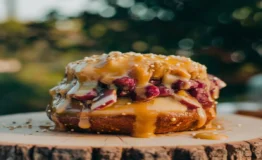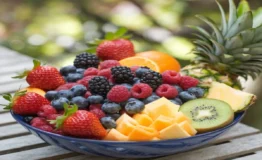Exploring the History and Name Behind This Iconic Candy
Turtle chocolates have captured the hearts of candy lovers for over a century. Combining pecans, caramel, and chocolate, these treats are as beloved for their flavor as they are for their unique name. But why exactly are they called “turtles”? In this article, we’ll dive into the origins of Turtle chocolates, explain the reasoning behind their name, and explore how they became a long-lasting favorite.
Part 1: What Are Turtle Chocolates?
1.1 Overview of Turtle Chocolates
Turtle chocolates combine three simple ingredients—pecans, caramel, and chocolate. When brought together, these ingredients create a decadent, crunchy, and smooth treat that has remained popular for decades.
Importantly, the name “Turtles” isn’t random. It perfectly describes the candy’s appearance. After the pecans are covered with caramel and chocolate, the final product looks remarkably like a turtle. The pecans resemble legs, and the rounded shape formed by the chocolate and caramel takes the shape of a turtle’s shell.
1.2 Why Are Turtle Chocolates Called “Turtles”?
The shape of the candy directly led to its name. When the pecans were arranged and covered with caramel and chocolate, the final product looked like a turtle. Thus, the candy makers gave the treat the playful and fitting name of “Turtles.”
Over time, this simple and fun name contributed to the candy’s widespread appeal. People easily remembered and recognized it because of the distinct turtle shape, which became synonymous with the treat itself. As a result, Turtle chocolates became a popular gift during holidays and special occasions, especially Christmas.
Part 2: The History and Origin of Turtle Chocolates
2.1 The Creation of Turtle Chocolates in 1916
Turtle chocolates originated in 1916, created by DeMet’s Candy Company in Chicago, Illinois. At the time, confectioners at DeMet’s experimented with different combinations of nuts and sugary fillings, ultimately discovering that pecans paired perfectly with soft caramel and a rich chocolate coating. This accidental discovery became the foundation of the now-famous Turtle chocolates.
At the start, the candy was made by hand, and each piece had to be carefully crafted. However, the delicious combination of textures and flavors quickly caught the attention of customers. Soon enough, word spread, and Turtle chocolates became a hit among those seeking a special treat.
2.2 How the Candy Earned Its Name
The candy’s name, as mentioned earlier, came directly from its shape. The candy makers noticed that the pecans sticking out from the bottom resembled turtle legs, while the rounded mound of caramel and chocolate formed the turtle’s body and shell. Because of this resemblance, the candy earned the name “Turtles.”
The name added to the candy’s charm, making it stand out in the market. By choosing a playful and descriptive name, the creators gave consumers an easy way to remember and talk about the product. Over time, Turtle chocolates became a household name, further solidified by their unique appearance.
2.3 Trademarking the Name “Turtles”
In 1923, DeMet’s Candy Company officially trademarked the name “Turtles,” ensuring that no other candy company could use it. This trademark protected their brand and helped them build a reputation for quality and craftsmanship. As a result, DeMet’s remains the only company that can legally sell chocolates under the “Turtles” name.
Other companies, however, created similar products under different names. For example, some competitors introduced their own versions with names like “Bear Claws” or “Pecan Clusters.” Despite this, DeMet’s Turtles continue to hold their position as the original and most recognized version of this delicious confection.
Part 3: Ingredients and Flavors of Turtle Chocolates
3.1 The Role of Pecans in Turtle Chocolates
The key ingredient in Turtle chocolates is the pecans. These nuts offer a distinct crunch and mild sweetness, which complement the smoothness of the caramel and chocolate. Not only do they provide texture, but they also add richness and depth to the candy’s overall flavor.
Pecans are native to North America and have long been used in confectionery. Their slightly buttery taste pairs perfectly with the other sweet elements of Turtles, making them a crucial part of what gives the candy its signature taste.
3.2 The Caramel Filling: A Gooey Center
Caramel is another key ingredient, and it adds the gooey, chewy texture that balances the crunch of the pecans. The caramel layer provides sweetness and stickiness, which holds the pecans together while also adding flavor.
Caramel, made by melting sugar with butter and cream, has a long history in candy making. Its ability to provide both texture and sweetness makes it the perfect filling for Turtles and is essential to the treat’s appeal.
3.3 Chocolate Coating: The Final Layer
Turtle chocolates are coated with either milk or dark chocolate, depending on the variety. This final layer not only adds a satisfying sweetness but also helps hold the candy together. The chocolate complements the nutty flavor of the pecans and the sugary notes of the caramel, creating a balanced and indulgent treat.
Milk chocolate tends to be sweeter and creamier, making it the most popular option. However, many prefer the richer, slightly bitter flavor of dark chocolate, which contrasts beautifully with the caramel and pecans.
Part 4: How Turtle Chocolates Are Made
4.1 Traditional Turtle Chocolate Production
In the early days, Turtle chocolates were made entirely by hand. Candy makers would carefully arrange the pecans, pour soft caramel over them, and then coat the clusters with melted chocolate. This labor-intensive process required precision and care to create the right balance of flavors and textures in every piece.
As demand grew, the production process evolved. Today, companies use automated processes to produce Turtle chocolates on a much larger scale, while still maintaining the same essential steps—arranging the pecans, pouring the caramel, and coating the candy in chocolate.
4.2 Homemade Turtle Chocolates
Making Turtle chocolates at home is a fun and rewarding process. With a few simple ingredients, you can recreate this classic treat in your own kitchen. Here’s a basic recipe to try:
Ingredients:
- 1 cup pecan halves
- ½ cup caramel
- 1 cup milk or dark chocolate chips
- 1 tablespoon butter
Instructions:
- Arrange the pecans in small clusters on a parchment-lined baking sheet.
- Melt the caramel and butter together in a saucepan, stirring until smooth.
- Pour the melted caramel over the pecans, allowing it to cool slightly.
- Melt the chocolate chips and drizzle the melted chocolate over each caramel-covered pecan cluster.
- Let the Turtles cool and harden before serving.
This recipe allows for variations, such as using dark chocolate or replacing pecans with almonds or cashews.
4.3 Commercial Production and Distribution
While homemade versions of Turtles are delicious, commercially produced Turtle chocolates from companies like Nestlé and DeMet’s are widely available in stores and online. These mass-produced chocolates are sold in holiday gift boxes, seasonal packaging, and individually wrapped pieces. Their large-scale distribution has helped make Turtles a common and beloved candy across North America.
Part 5: Why Turtle Chocolates Have Endured
5.1 Nostalgia and Tradition
Turtle chocolates have become more than just a candy—they’re a tradition. Many people associate Turtles with special occasions, such as Christmas, Valentine’s Day, or family gatherings. For decades, they’ve been a staple in holiday gift-giving, making them synonymous with festive celebrations.
For many families, Turtle chocolates represent memories and nostalgia. They serve as a sweet reminder of special times spent with loved ones, which is why they continue to be so cherished.
5.2 Variations and Innovations: Why are Turtle chocolates called turtles
Over the years, different variations of Turtle chocolates have been introduced. These include:
- Dark chocolate Turtles, offering a more intense, less sweet flavor.
- Sea salt Turtles, where the saltiness balances out the sweetness of the caramel.
- White chocolate Turtles, which provide a creamier, lighter taste.
These variations keep the brand fresh and exciting for new and loyal customers alike. While the original recipe remains the most popular, these innovations help ensure that everyone can find a version of Turtle chocolates they enjoy.
5.3 Cultural Impact and Recognition: Why are Turtle chocolates called turtles
Beyond their flavor, Turtle chocolates have made an impact in pop culture. Their unique shape and long-standing popularity have made them a recognizable symbol in the candy world. Turtles often appear in holiday gift baskets and advertisements, reinforcing their place in the broader candy culture.
Part 6: FAQs About Turtle Chocolates
Why Are Turtle Chocolates Called “Turtles”?
The name “Turtles” comes from the shape of the candy. The pecans resemble turtle legs, and the rounded mound of caramel and chocolate looks like a turtle shell.
Who Created Turtle Chocolates?
Turtle chocolates were created in 1916 by DeMet’s Candy Company in Chicago.
Are There Different Types of Turtle Chocolates?
Yes, several varieties exist, including milk chocolate, dark chocolate, and sea salt versions.
Can You Make Turtle Chocolates at Home?
Yes, making Turtle chocolates at home is simple. You just need pecans, caramel, and chocolate to recreate this classic treat.
Conclusion
Turtle chocolates have stood the test of time, offering a perfect balance of pecans, caramel, and chocolate. Their unique turtle-like shape and the playful name contributed to their popularity, but it’s their flavor and texture that have kept them in the spotlight for over a century. Whether you’re enjoying them as part of a holiday tradition or making them from scratch at home, Turtle chocolates bring joy and indulgence to any occasion.






